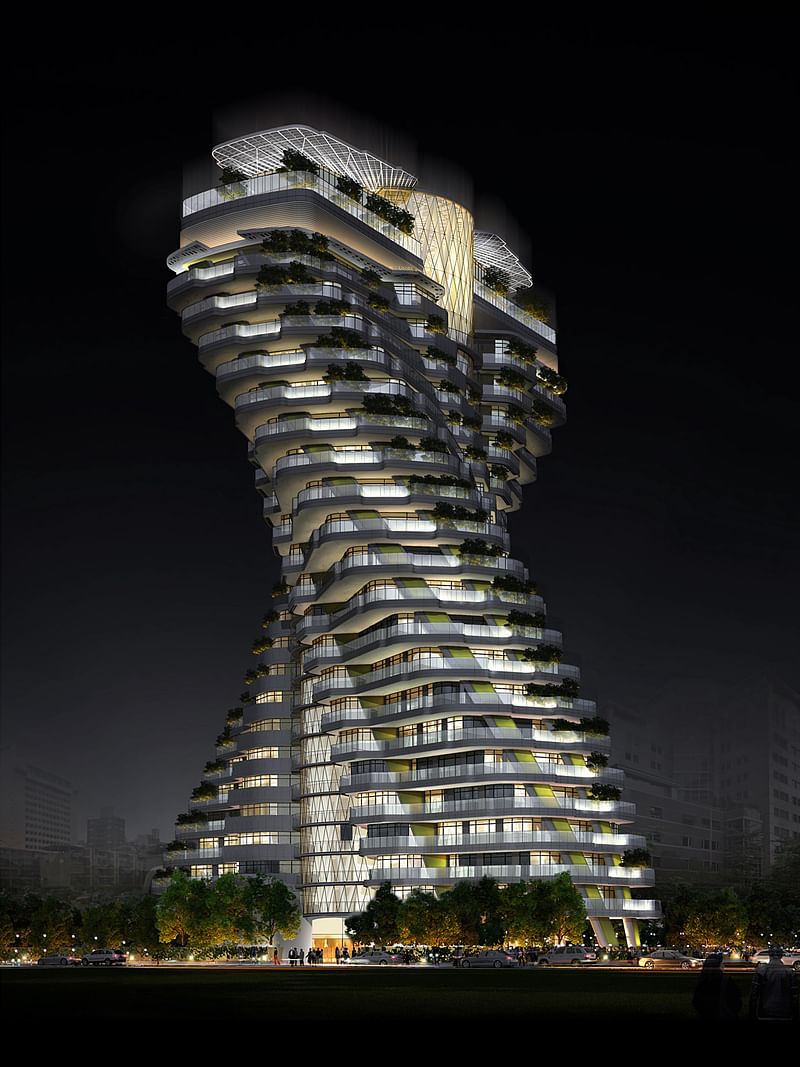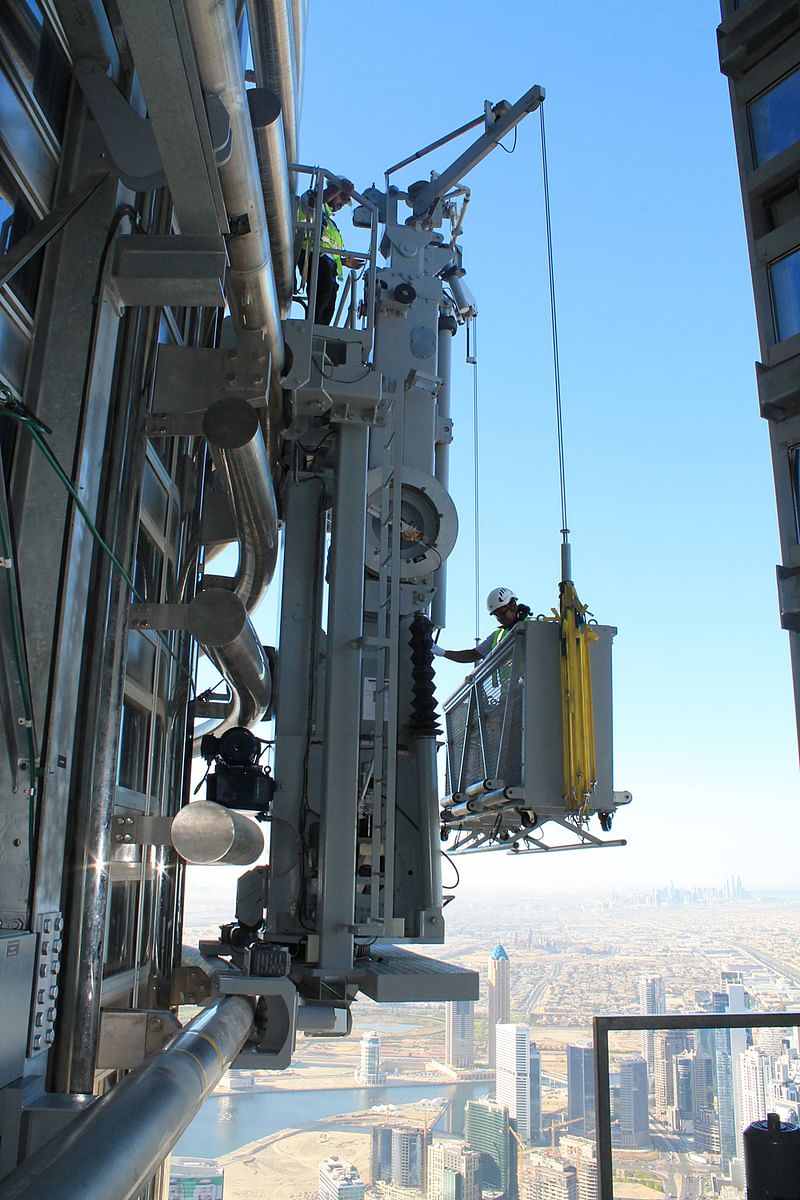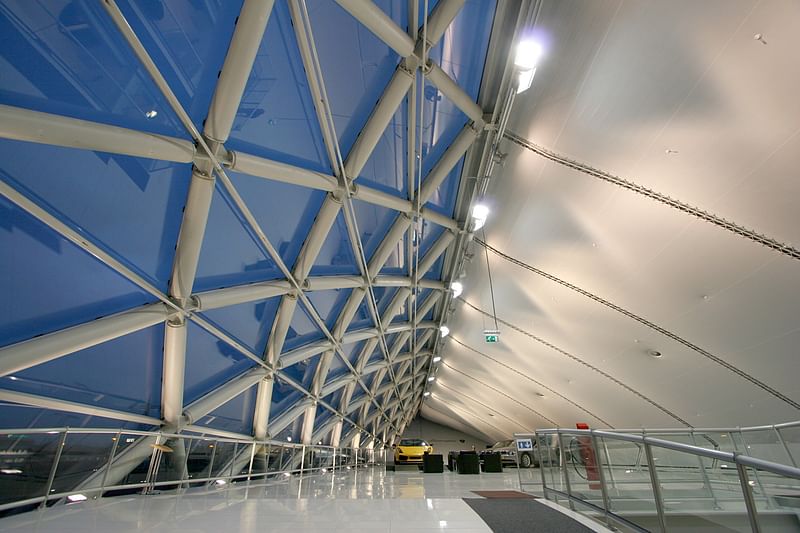Chifley Tower + HOLEDECK win in CTBUH 2015 Performance and Innovation Awards
By Bustler Editors|
Wednesday, Jul 15, 2015

Related
The Council on Tall Buildings and Urban Habitat recently announced the winners of the 2015 Performance and Innovation Awards. Things get technical in this awards program, which offers a comprehensive evaluation of top-notch buildings while also upholding the value of improving building performance -- including structures that have the strongest positive impact on its surrounding environment and communities.
The Chifley Tower in Australia won this year's Performance Award, while the Innovation Award went to the HOLEDECK® concrete system. The Technical Awards Jury also selected three Innovation Award finalists.
Winners will be presented with their awards during the CTBUH 14th Annual Awards Symposium, taking place at the Illinois Institute of Technology in Chicago on November 12.
Check out the winning and finalist projects below.
PERFORMANCE AWARD: Chifley Tower
The Performance Award recognizes a building's measured environmental performance or development. The award goes to the building that has the least environment impact on the urban realm using hard measured data, as opposed to "best intentions".
"Originally completed in 1992, the Chifley Tower’s core infrastructure dated back to 1980s technology, and it was steadily falling behind its competitors in terms of its performance. In 2008, Chifley Tower began an overhaul of its key building systems and services to deliver vastly improved performance, energy efficiency, and reliability. The target of this project was for the building to achieve a 4.5 star NABERS Energy Rating, which it was able to meet. In fact, the project realized a savings of 55% in electricity consumption, and reduced its greenhouse gas emissions by 55% as well. Chifley Tower was able to achieve this highly complex project in an occupied commercial property over a prolonged period of time, which is a testament to the high standard of project planning and management.
The Technical Awards Jury applauded the efforts to update the energy efficiency of this aging building, both to keep the building competitive with newer structures, as well as addressing critical issues surrounding climate change: 'The outcome of the energy upgrade was successful on several fronts – it reduced energy costs for the building owner and their tenants, it reduced greenhouse gas emissions, and repositioned an older building in a very competitive commercial real estate market,” commented Ashok Raiji, CTBUH Technical Awards Juror and Principal and Mechanical Engineer at Arup. “In a sense, the project gave a ‘new and better life’ to an old asset that was becoming non-competitive in the market place.'
INNOVATION AWARD: HOLEDECK
The Innovation Award focuses on one special area of innovation within the design, construction, or operation of the project, not the building overall. This award recognizes a specific area of recent innovation for a tall building application that has been incorporated into the design, or implemented during construction, operation, or refurbishment.

"HOLEDECK is a system of voided concrete slabs that can be pierced through their thickness by electrical and plumbing systems, drastically reducing the vertical space needed to house these components. This technology has a multitude of implications for sustainability, especially when it is implemented on the scale of a tall building. By reducing the necessary vertical length of each floor, fewer materials are required to achieve the same floor area as a typical high-rise building. Due to the way that HOLEDECK slabs are designed, the system eliminates the concrete mass that is not working to support shear, thus reducing the overall weight of the structure without compromising its ability to achieve long spans. This results in a reduction of the built volume and concrete consumption, and thus minimizes the carbon dioxide footprint of a building project.
The Technical Jury was impressed that this clever, simple innovation in concrete is using existing technologies and improving on them: 'HOLEDECK is a simple and elegant way of creating coffer slabs, with holes in the webs. It overcomes one of the main obstacles to the use of coffer slabs, which is that all services usually have to run below the slab rather than in it. It appears to be particularly suitable for light weight long-span floors or where architects and engineers are interested in making better use of the thermal mass of a concrete coffer slab.” noted Technical Awards Jury Chair and Director, Engineering Excellence Group of Laing O'Rourke David Scott. “The jury felt that some of the best innovations come from simple ideas and HOLEDECK could re-energize this form of construction.'
The jury also selected three Innovation Award finalists:
Tao Chu Yin Yuan

"Tao Chu Yin Yuan illustrates how to create tall non-conventional forms in a highly active seismic zone. The architectural design of the tower is reminiscent of a tree, with vertical landscaping climbing up the tower, as the tower floors are rotated clockwise at 4.5 degrees in relation to the adjacent floor. While none of the solutions used to create it are unique or new, the noteworthy innovation is in the unique combination of existing solutions. Base Isolation has been around for 30 years as a solution to reduce the lateral loads on buildings. However, for high-rise buildings, the overturning uplift forces on the isolators often made its application untenable. By creating a long span system that is held down by the dead load of the building on the outside via sweeping columns, and a circular core to resist torsion, a unique architectural design was made possible."
Façade Access Equipment (in the Burj Khalifa)

"Burj Khalifa posed the standard challenges of any tall building, which is how to provide façade access, but not compromise the architecture. Due to the height, area, and architecture of the Burj, it was obvious that a large quantity of Building Maintenance Units (BMUs) were required to provide the necessary maintenance. The designers of the Burj had introduced a series of horizontal architectural tubes to break up the massing of the tower. A joint effort of both the architectural design team and the façade access equipment design team resulted in an elegant solution. It was suggested these tubes could be converted into tracks for a BMU to ride on. The development of a BMU mounted on a vertical shunt track minimized the required interior space which would typically be used to store the BMUs. By utilizing an architectural feature of the building as a track, no visual impact was created."
Triagrid Structure

"The Triagrid Structrual System is a free-form load bearing system in which the building’s skin and structure are synchronized. It creates a tremendous freedom for the designer, using mass-production technology to produce unique building components. This integrated approach results in cost savings and architectural eloquence. The characteristic architecture of the Liwa Tower (right) in Abu Dhabi is achieved by using components that are unique in size and shape. These components are manufactured using CNC (Computer Numerical Controlled) production facilities using the data derived directly from the computer models of the architect. The aesthetic freedom to create the elegant curves that shape the Liwa Tower within a reasonable timeline and budget can only be realized using a system such as Triagrid’s integrated design strategy for skin and structure. The structural logic is expressed in the architecture, and the decorative patterns of the façade are the detailed expression of the architectural tessellation of the surfaces."
You can learn more about all the projects above here.

Share
0 Comments
Comment as :